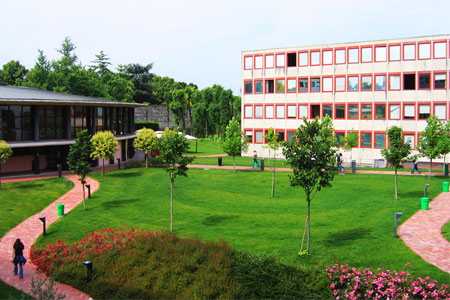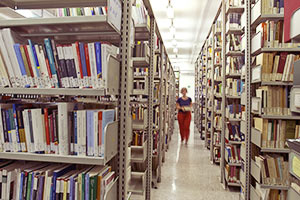Learning outcomes
This course provides the elements students need to understand the relationship between writing and the figurative apparatus, including book ornamentation, and to be able to assess the aesthetic, communicative and didactic functions of book illustration.
It begins with the consideration of the book as an “artistic” product with its own formal and stylistic features. To this end looking to the past, even the remote past, serves as a premise for approaching the book with greater awareness and understanding how its design and production have evolved in contemporary communicative media (video, computer-based, digital etc.). In other words, the educational objectives are to provide a historical background combining forms of continuity and technological innovations, aesthetics and communication, that will be useful for students interested in pursuing a career and making choices in the field of publishing.
The course focuses on and brings together three fundamental elements. The first concerns the aesthetics of font and typesetting, that is, the “architectural organism” considered in terms of its rule-bound formal aspects, while contemporary examples are approached as instances of experimental and provocative “breaks” with tradition. To this end, the course briefly addresses the main stages in the emergence of the alphabets of ancient civilizations up to the formation of Roman writing, the foundation of the classical tradition of all subsequent printing activities including contemporary examples.
There will also be institutional references to the significance of writing and the image in relation to texts in ancient civilizations, including those outside of Europe and especially in connection with their religions and symbolic or sacred values.
The second element regards the procedures used to create figurative designs and illustrations, for example illumination, woodblock and intaglio in their various forms (direct and indirect, involving the graver and etching with its multiple variations) leading up to the most modern industrial systems of reproduction, beginning with lithography and going on to cover the ensuing evolution of industrial printing. The course also addresses the terminology used in the various European languages.
The third element involves a diachronic investigation of the history of illustrated books from the birth of the printing press to the modern and contemporary ages, making note of the typological features which, albeit through changing styles and techniques, have persisted over time. The study of this latter element will involve considering the structural nature of the code and the relationship between the field of writing and the field of the image from late antiquity through the main junctures of the Middle Ages, such as the Romanesque and Gothic periods.
Pedagogically speaking, students will be guided in learning the stylistic and evaluative method of analysis applied to illustrated books. The same method is used in the course on modern art history and this is another reason why the latter course should be considered preliminary. In the classroom, students will be engaged in discussion following a seminar-style approach in order to aid them in acquiring the appropriate analytical vocabulary.
Approaching the history of illustration using the methods of art history requires locating the key figures of the art of printing and illustration within the geography and history of Italian and European culture.
Due to the brief duration of the course, it will not be possible to hold classes at libraries or temporary exhibitions. Instead, students will be provided with more in-depth information during class sessions, particularly as concerns the main stages of the history of illustration, including contemporary illustration.
At any rate, students will be permitted to choose these arguments according to their own interests. On the basis of the specialized literature presented in class, students will have to choose an exam topic for which they demonstrate having assimilated the methodological guidelines provided throughout the course.
* Introduzione. Orizzonti della disciplina.
1.Illustrare e decorare. Terminologia e significati. Decorum e decorare nell’estetica classica e moderna.
2. La nascita della scrittura. Il segno e la materia. Primi supporti e prime testimonianze. La scrittura cuneiforme, la scrittura egizia. Il papiro. Il rotolo.
3. La scrittura dei romani.
4. Dal rotolo al codice.
5.- 6. La tecnica della miniatura. I primi codici miniati e le esemplificazioni dei rapporti tra testo e immagine. Il Virgilio Vaticano, l’Iliade Ambrosiana, il Dioscoride di Vienna.
7. Civiltà, religioni libri e illustrazioni: ebraismo, Islam etc.
8. Le regioni del codice illustrato.
La chiesa di Roma e la funzione dell’immagine. La diffusione del cristianesimo, l’ordine benedettino e la produzione dei codici illustrati. La chiesa di Bisanzio e la civiltà del codice illustrato, l’iconoclastia e i suoi presupposti teologici. Palestina, Siria e Africa cristiana.
La cultura insulare e la civiltà del codice illustrato.
9. Periodizzazione e grandi pagine della storia del a miniatura nel Medioevo.
La civiltà carolingia e Ottoniana. Il romanico, il Gotico. L a miniatura del Gotico italiano. Il Tardogotico in Europa e in Italia.
10.-11 Il codice illustrato umanistico. L’invenzione della stampa e i primi libri illustrati in Germania e in Italia, generi letterari e funzione dell’immagine. Incunaboli illustrati con particolare riguardo ai proto-tipografi romani e alla situazione di mercato a Venezia fino ad Aldo Manuzio.
12. I teorici del carattere. Lettura e commento della Iubilatio. Alberti, Felice Feliciano, Mantegna e la littera mantiniana, Damiano da Moille, Luca Pacioli, De Divina proportione.
13. - 14 La xilografia. I grandi protagonisti della tecnica xilografica. Schongauer, Dürer, Luca di Leida, Tiziano, Ugo da Carpi.
15. La calcografia, aspetti della tecnica dell’incisione diretta. Il bulino, la puntasecca, la maniera nera. I protagonisti della prima fase. Pollaiolo, Mantegna, Raimondi.
16. La calcografia, aspetti della tecnica dell’incisione indiretta. L’acquaforte, l’acquatinta, ceramolle e lavis. I primi protagonisti del “facil modo che è bellissimo”: Parmigianino, Barocci, Callot; Cort, Carracci.
17. Il frontespizio, origini ed evoluzione. Funzioni e tipologie figurative.
18. Momenti fondamentali del carattere tipografico nel Cinquecento, Manuzio e il suo lascito. I protagonisti in Italia e in Europa.
19. Linee fondamentali dell’editoria illustrata del Cinquecento.
20. I grandi del carattere tipografico in Italia e in Europa nel Seicento.
21. Linee fondamentali dell’editoria illustrata nel Seicento.
22. Rembrandt incisore.
23. Linee fondamentali dell’editoria illustrata nel Settecento.
24. Piranesi. Tecnica, i generi, il mercato internazionale. Piranesi archeologo, le Carceri d’invenzione.
25. I grandi del carattere nel Settecento in Europa. Bodoni e l’estetica neoclassica. I manuali tipografici.
26. La litografia, tecnica; la serigrafia, tecnica.
27. Le innovazioni della tecnica di stampa e l’editoria divulgativa illustrata.
La nascita della fotografia e illustrazione, evoluzioni tecniche, nuove possibilità riproduttive, nuovi filoni editoriali. Il retino.
28. Industrializzazione del carattere nell’Ottocento.
29. Il manifesto, la nascita la diffusione in Italia, in Europa e Oltreoceano.
30. La nascita del libro per l’infanzia. Il fumetto.
31. Movimenti e avanguardie, riscontri nelle creazioni tipografiche ed editoriali.
Morris e Arts and Crafts, Art Nouveau, Liberty, Secessione, Espressionismo.
Cubismo, Futurismo, Dada, avanguardie russe. Bauhaus e i principi del moderno design.
Pop art. Tendenze e personalità del secondo Novecento e contemporanee.
32.-33.
I protagonisti del Novecento in Italia. Ratta e Bertieri. La Scuola del Libro di Urbino. Illustrazione di Stato. Il libro d’arte nel Novecento.
** Conclusioni e nuove prospettive. Dal calamo al torchio, dal computer al digitale. La figura del grafico e del curatore editoriale oggi.







